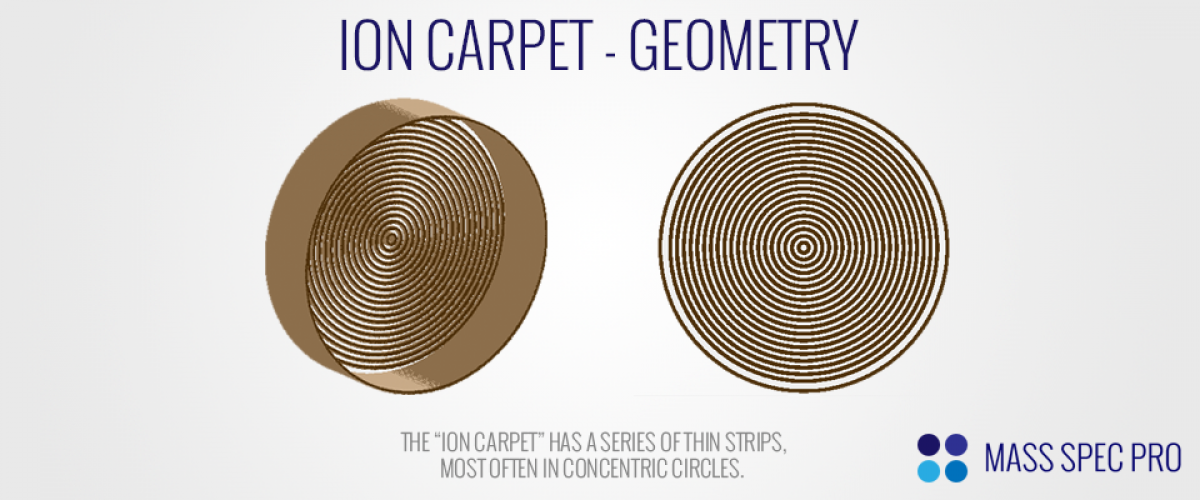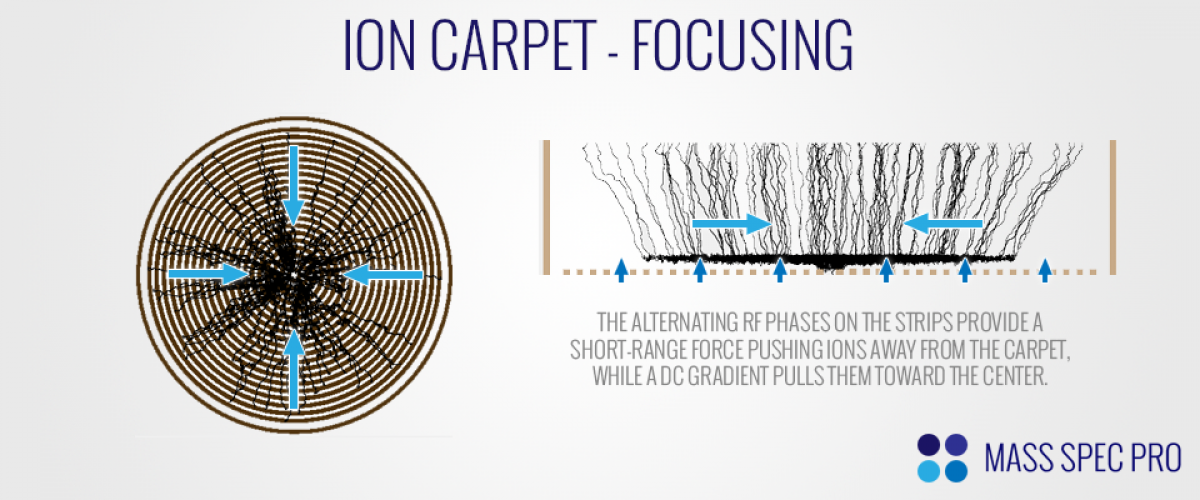The "ion carpet" is a relatively new ion optical element with unique characteristics. There are several variations of the ion carpet geometry, but they share a few common features. At a base level, an ion carpet is a planar arrangement of numerous metal strips that can each have different voltages applied to them. The strips themselves can be arranged in a concentric radial pattern or linear arrays, with the most common being concentric cirlces. The ion carpet can accept ions with a large distribution of initial positions, masses, velocities, etc. much like its cousin, the ion funnel.

Focusing Mechanism
The strips may have alternating RF waveforms applied to them (180 degrees out of phase from strip to strip), much like a "Stacked Ring Ion Guide" or "Ion Funnel". The RF field (typically ~1 MHz and tens to hundreds of Vpp) creates an effective potential that is repulsive to ions, but only at very close proximity to the strips themselves. This short-range repulsion can be utilized to essentially make the ions hover over the carpet at very close distances. With RF alone, ions would simply hover over the strips and perform a random walk across the surface of the carpet as they collided with neutrals; there would be no motivation for them to move to one part of the carpet or another. In order to further manipulate the hovering ions, an additional DC gradient may be applied. Typically the DC gradient is applied such that the centermost ring is at the most "downhill" DC potential for the ions of interest (e.g. the lowest potential for positive ions or highest potential for negative ions). The gradually changing DC potentials cause ions to be pulled toward the center strip/ring while the RF keeps them perpetually hovering. As a result, all of the ions converge toward the centermost strip. Once the ions reach the center of the carpet they can subsequently be transferred to another section of the instrument (e.g. the next "stage" of a differentially pumped vacuum chamber).

